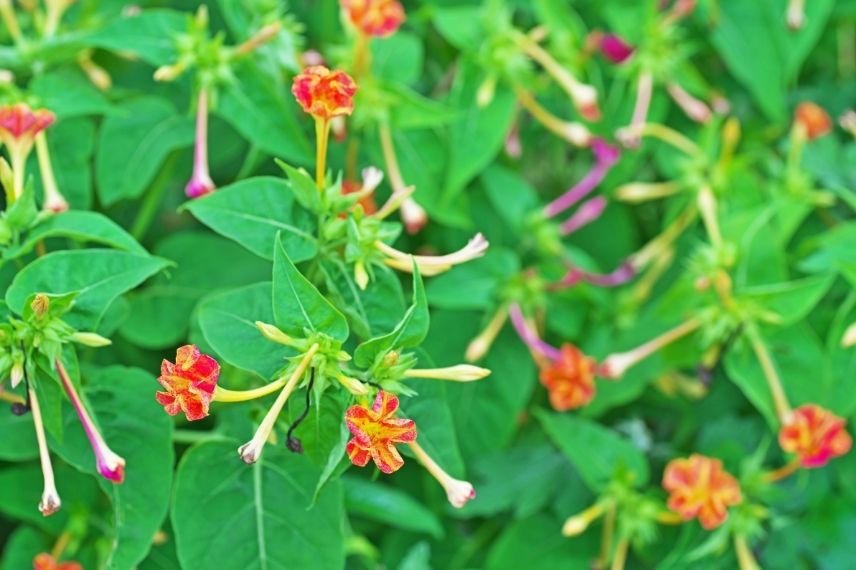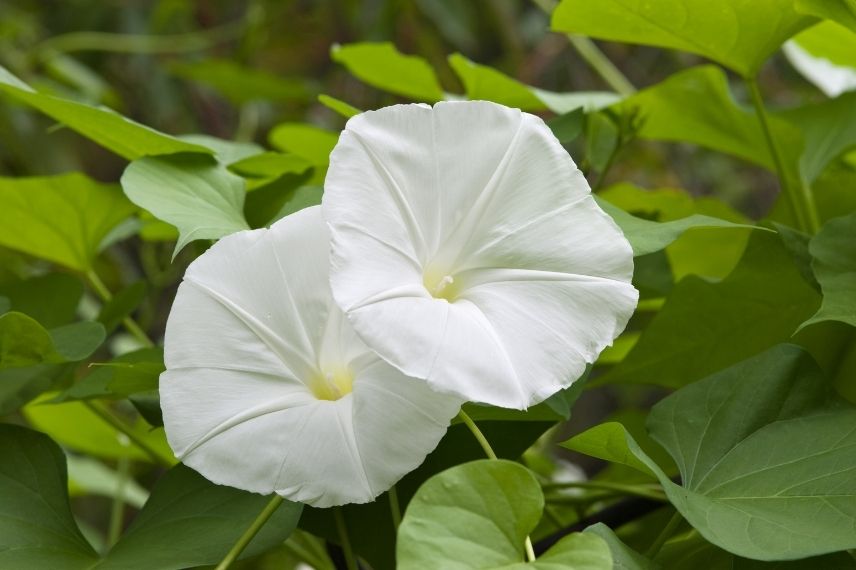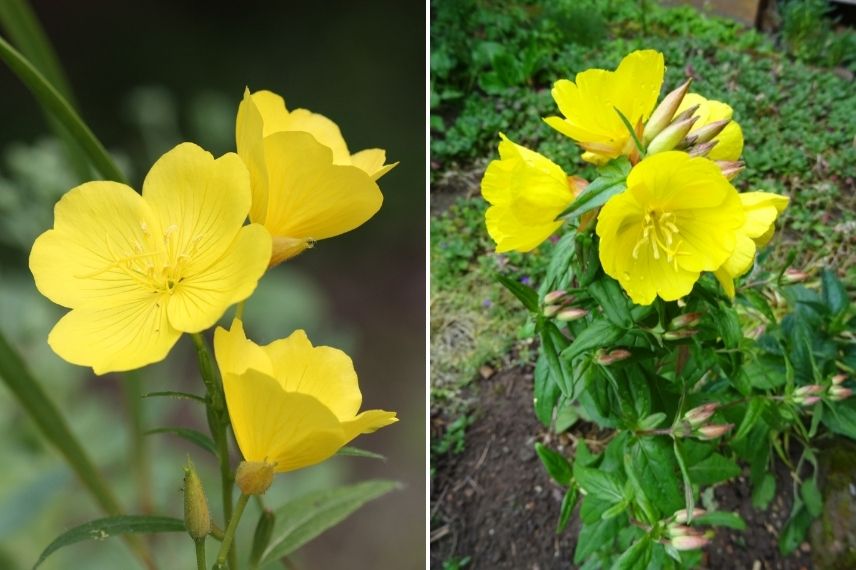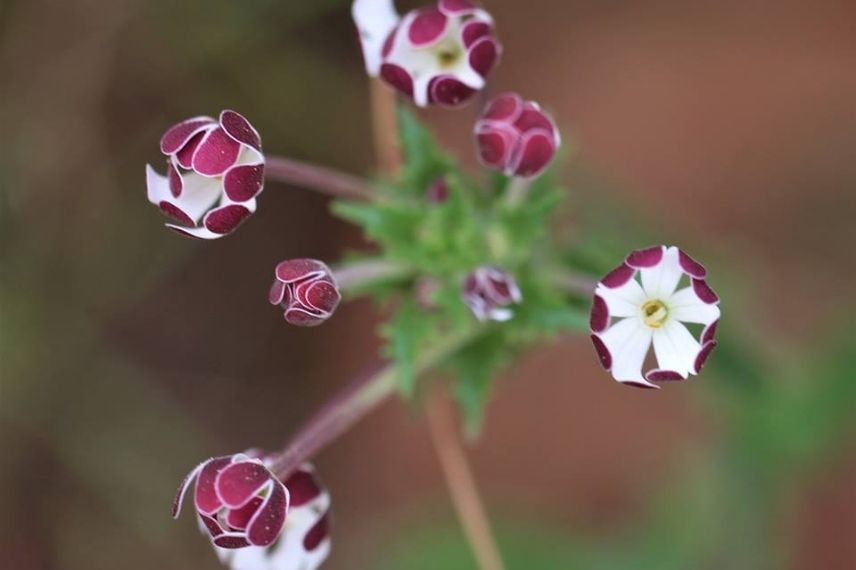
These amazing flowers that only open at night
Our selection of night-flowering and fragrant plants
Contents
Evening primrose, moon flower, queen of the night, midnight flower… So many names that are more poetic than the last to refer to plants sharing a common trait: their nocturnal flowering.
Unlike most plants, which bloom during the day, these unique specimens wait for the sun to set to reveal their most beautiful aesthetic features. These plants therefore flower at night, but are also sensitive to variations in daylight, sometimes opening up on overcast days.
This astonishing flowering corresponds to their reproductive processes: pollination occurs through nocturnal animals, such as moths, beetles, or even bats. The ephemeral flowers must synchronise with the life rhythm of these pollinators to attract them, often by also revealing delightful fragrances. Conversely, they protect themselves during the day to avoid attracting other unwanted visitors.
Here is our selection of 6 plants to admire (and smell) as evening falls.
The Night Blooming Jasmine, stunning colourful trumpets
The Four o’clocks (Mirabilis jalapa), also known as Marvels of Peru, are plants native to Central and South America.
They unfurl in the late afternoon or on cloudy days and close as soon as they are touched by sunlight. These vigorous plants quickly form lovely small bushes about 80 cm tall and 50 cm wide, which brighten the entire summer season. Their trumpet-shaped flowers offer a beautiful palette of colours: white, red, pink, yellow, solid, bicolour, or even variegated. The flowers emit a pleasant and strong sweet fragrance. The foliage displays a lovely glossy green, beautifully highlighting the flowering.
Somewhat tender (hardy down to approximately -5 °C), these tuberous perennials are grown as annuals in most regions outside of mild climates. They can also be lifted from the ground for storage, similar to dahlias.
The four o’clock is an emblematic flower of Île de Ré, where it can even become quite invasive. The plant thrives in fertile, well-drained soils that are not too dry in summer, in sunny or partially shaded positions. It can be grown to dress the bases of walls, in borders, in cool rockeries, or in pots.

Mirabilis jalapa
The white Ipomoea, a maculate flowering
The white ipomoea (Ipomoea alba) is also sweetly known as moon flower. Blooming at dusk, it indeed seems to reveal itself under the light of the celestial body, before disappearing at dawn. This magnificent climbing plant native to South America blooms from July to September. It then offers its large white or pale pink funnel-shaped flowers, measuring nearly ten centimetres in diameter. They are also highly fragrant. The adorable dark green heart-shaped foliage adds even more charm to this beautiful plant.
Fast-growing, the white ipomoea can reach heights of 3 metres as well as spread (up to 30 metres in its native habitat!). Its voluble stems can easily adorn verandas, arches, arbours, or pergolas for the season.
The ipomeas are easy to care for. Fearing frost, they are grown as annuals in our latitudes. Our moon flower enjoys warm, sunny locations, in rich soil that is regularly watered.
To learn all about these climbers, we invite you to consult our sheet “Ipomeas: sowing, planting, cultivation, and care.”

Ipomoea alba
The leaning Silene, with its light and wild flowers
The campion (Silene nutans) is a perennial herbaceous wild plant found in nature in France. Its airy white flowers, delicately inclined, open in the early evening during the summer months, from June to August. They exude a sweet, indulgent fragrance.
This species is threatened by habitat destruction and is becoming endangered in certain regions of northern France.
The nodding campion reaches about 50 cm in height and fits perfectly into country-style and natural gardens, for example in a flowering meadow or to green up rockeries and slopes. Very hardy and tolerant, it is easy to grow in sunny or partially shaded situations, in poor, rocky, and fairly dry soils.
Find all our growing tips in the dedicated sheet “Campion: plant, sow, grow.”

Silene nutans
Night-flowering cacti
The genus Selenicereus includes cacti that bloom at night, referencing the moon goddess “Selene” in Greek mythology. Their flowers are nicknamed the Queens of the Night.
One of the most well-known cacti in the genus is Selenicereus grandiflorus, also known as the vanilla cactus. It reveals the tips of its petals after a few years of cultivation in spring or summer. Very ephemeral, its flowers open for only one complete night, until dawn. The plant adorns itself with large, cup-shaped, pale yellow-white flowers, which can reach nearly 40 cm in diameter, featuring long, slender petals. They emit an extremely indulgent vanilla fragrance, which gives it its nickname.
This cactus is sometimes confused with Epiphyllum oxypetalum or the midnight flower, a plant from the same family with similar flowering characteristics.
Let’s also mention the Selenicereus megalanthus, known for producing an edible fruit, the yellow pitaya or dragon fruit, and Selenicereus anthonyanus, with nocturnal flowers revealing beautiful pink tones.
These perennial cacti are epiphytic or lithophytic: their aerial roots allow them to easily cling to other plants or rocks, above ground. Their silhouette is columnar, like a candle (cereus), associated with stems that are trailing or semi-climbing. They are perfect when grown in a hanging basket or in a pot with a support.
In our climates, they can be placed outside during the warm season and brought in as soon as temperatures drop below about 10 to 12 °C. They require bright exposure and regular misting to replicate the humid conditions of their natural habitat. Like most cacti, they need a perfectly drained, light, and sandy substrate.

Selenicereus anthonyanus, Epiphyllum oxypetalum, and Selenicereus grandiflorus
Evening Primroses, true suns of the night
Evening primroses or oenotheras (Oenothera) are perennial plants valued for their bright flowering, typically yellow, as seen in the Missouri evening primrose or the tetragonous evening primrose.
They bloom from mid-spring to late summer, in the evening, at dusk. The plant then reveals numerous ephemeral cup-shaped flowers. The flowering is accompanied by a sweet, gentle fragrance, attracting even more pollinators.
In autumn, the foliage changes colour to reflect the season, shifting from green to bronze-purple.
The small silhouette of evening primroses (about 30 to 40 cm in height and 30 to 60 cm in spread) will fit well in pots, borders, or rockeries.
Easy to grow and hardy down to -15°C, they require only well-drained soil, free from standing water, and a sunny position to thrive.

Oenothera missouriensis and Oenothera tetragona
Night Phlox, the Evening delight
The Night Phlox (Zaluzianskya capensis) or midnight candy is a perennial native to South Africa, grown here as an annual due to its low hardiness.
Its lovely small white flowers, with violet-pink undersides and finely incised petals, open in the late afternoon. Flowering occurs from late spring to late summer. But it is also for its fragrance that this plant delights us: it reveals a delicious and enchanting scent of vanilla honey.
Small in size, it forms a bush of 40 cm in all directions, thriving in a warm, sunny position, in well-drained soil, but regularly watered. It can easily be grown in a pot, protected from frost in winter.

Zaluzianskya capensis (photo Karen Pagel – Wikimedia)
- Subscribe!
- Contents
































Comments